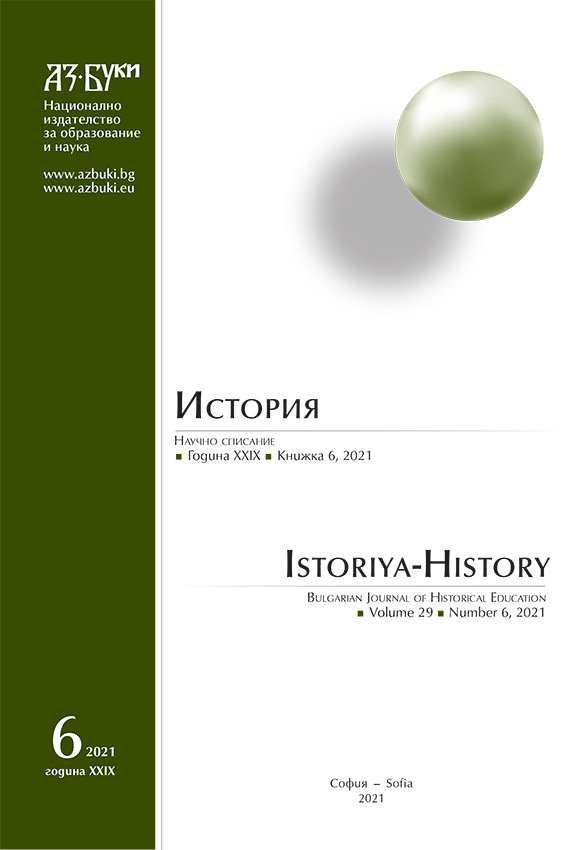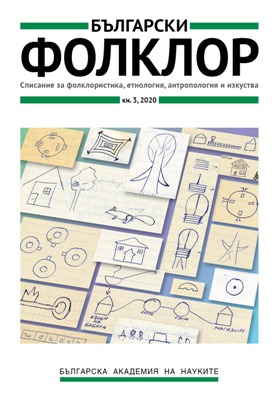
We kindly inform you that, as long as the subject affiliation of our 300.000+ articles is in progress, you might get unsufficient or no results on your third level or second level search. In this case, please broaden your search criteria.



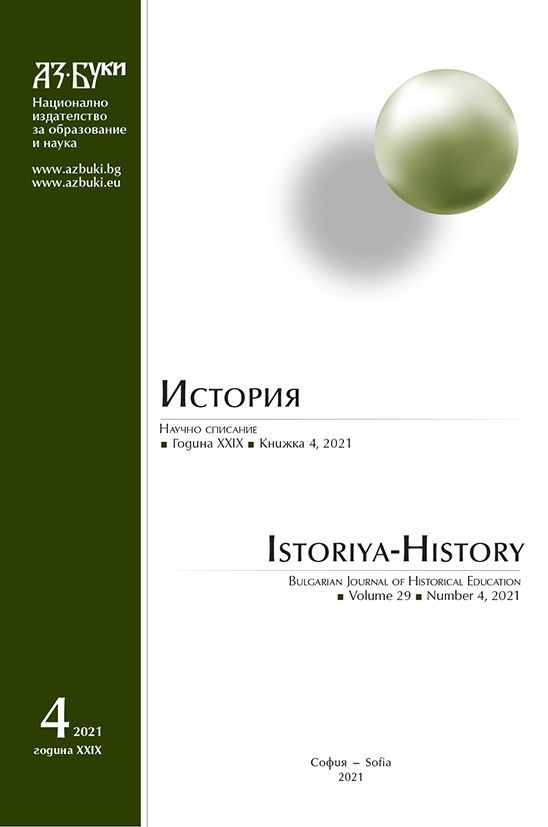
Based on a politico-economic analysis, the paper provides answers to important questions about the April Uprising of 1876: why the Bulgarians revolted, why many Bulgarians did not revolt, and why the uprising was relatively short as a time-span. According to the available primary sources the Bulgarians who revolted in April 1876 revolted because they were relatively wealthy and as such they had something to lose. Revolutionary sentiments, however, did not prevail in their political views concerning the Bulgarian question. Here comes the role of the propaganda lie about the authority planned massacre of the Bulgarians. As a result, live and property of the future rebels, were considered as endangered. The response to the threat is a risky and desperate anti-state uprising. The organizers of the uprising did not overcome the free-rider problem. The population in the insurgent settlements was left to pay the price of putting the Bulgarian question before Europe. Additional difficulties in the implementation of a relatively mass riot pose the short deadlines for its preparation. They resulted in high prices of and do not allow the supply of larger quantities of weapons and gunpowder.
More...
This article explores some of the most important aspects of the beginnings and early development of Russophobia in Britain. In the first half of the 19th century public opinion started to shift from Francophobia to Anti-Russian sentiment. The reasons for this were political and cultural. Britons were afraid of the Russian expansionism and felt contempt for the Russians as being less civilized than other European nations. A great impact on the British perception of Russia made Emperor Nicholas I and his conservative and despotic policies. Thus, the period between the Vienna Congress of 1815 and the outbreak of the Crimean War was marked by increasing Russophobia, that shaped the political view of the British people.
More...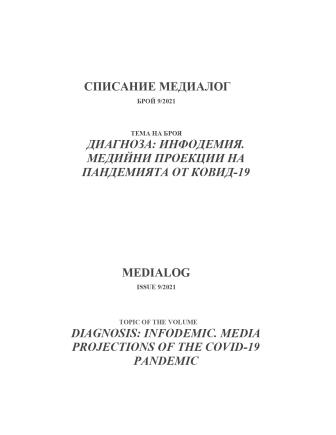
The article looks at the systematic attempts to transform the coronavirus epidemic into a state ideology similar to the Marxist-Leninist one, within the former Eastern Bloc. However, the current ideological attempts do not rely on repressive state apparatuses. They are voluntarily accepted. What operates behind this voluntary acceptance is a public communication strategy based on the war model and in a regime of hyper-information, i.e. infodemic. It is a strategy with a pyramidal structure, the top of which is held by the state government, reframed as “good” power. For the first time at the base of an ideology is not a historic event, but a natural one. This gives such a nature-based ideology the chance to exploit and govern the most basic existential fears of people. Furthermore, the article is focused on the current Bulgarian political situation. However, the aforementioned pandemic’s ideological strategies and their influence in Bulgaria are placed in the broader context of the return of conservative ideologies and the destabilization of the liberal consensus in Europe and the States.The article looks at the systematic attempts to transform the coronavirus epidemic into a state ideology similar to the Marxist-Leninist one, within the former Eastern Bloc. However, the current ideological attempts do not rely on repressive state apparatuses. They are voluntarily accepted. What operates behind this voluntary acceptance is a public communication strategy based on the war model and in a regime of hyper-information, i.e. infodemic. It is a strategy with a pyramidal structure, the top of which is held by the state government, reframed as “good” power. For the first time at the base of an ideology is not a historic event, but a natural one. This gives such a nature-based ideology the chance to exploit and govern the most basic existential fears of people. Furthermore, the article is focused on the current Bulgarian political situation. However, the aforementioned pandemic’s ideological strategies and their influence in Bulgaria are placed in the broader context of the return of conservative ideologies and the destabilization of the liberal consensus in Europe and the States.
More...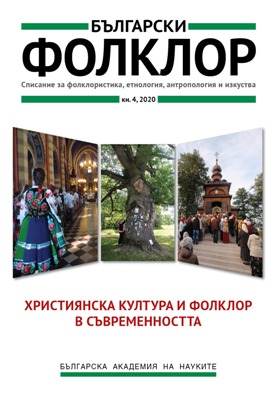
Anthony is a highly honoured saint, considered to be a patron and a defender of various diseases. The church “St. Anthony” in the smallest town in Bulgaria – Melnik – is known exactly for its healing aspect and can be identified as one of the most sacred cult sites in the surroundings, connected with numerous stories of miracles, healings, interesting and rare ritual practices. The modern state and functioning of the church is a complex of different components that build the role and importance of the cult site as a very attractive place for pilgrimage and healing. Besides of the cult of the patron itself, these components include also various miraculous objects, iconographic features, the location of the church, and characteristic stories of miracles, media, and personal representations and interpretations. In this article, I will examine the cult of St. Anthony in the city and church dedicated to him through the prism of two basic elements – miraculous objects or other ones in the church area and beliefs and ritual practices related to them. It is precisely the connection between the different components of the cult site, combining diverse objects of pilgrimage, honoring, and usage, that creates a truly unique context in which this church, the only one in the country until recently dedicated to the St. Anthony, exists. The analysis is based on observations from conducted fieldwork studies in Melnik and bibliographic and online surveys in the period 2016–2018.
More...
In the thirteenth century, in the calendar of the Catholic Church, a special day is established to honour the Holy Communion – the bread and the wine, turned into the Most Holy Body and Blood of Christ. The feast is celebrated everywhere in the Catholic world with a solemn liturgy and a procession. The article presents in a comparative perspective fieldwork observations and documentation of this Catholic feast in two villages in Bulgaria and in Poland: the village of Oresh, Svishtov region (in 1995 and 2015) and the village of Złaków Kościelny, Łowicz district, Łódź voivodeship (in 2016). The author outlines the specific characteristics in performing of the feast in the two communities (Corpus Christi in Oresh; Boże Ciało in Złaków Kościelny), conditioned by differences in the confessional and cultural history as well as by different conditions of practicing the religious traditions.The comparative study shows the significance of local identity, expressed through elements of inherited traditional culture. For the Bulgarian Catholics, cultural identity is affirmed mainly through their religious affiliation, which is different from the official Orthodox religion, predominant in the country. The revival of the festive Catholic processions in modern times is an expression of the desire for a sustainable connection with the restored family and community confessional tradition. An essential expression of the local specificity in the religious festivity of the inhabitants of the Polish village is the adherence to traditional elements of the folklore culture, which have cultivated the local religious tradition.
More...
A widely popular concept among Orthodox Christians is that religious images as intermediaries between man and God (the Mother of God or the saints) can give material signs of the divine presence on Earth and often do so. First comes the veneration of miracle-working icons, which are connected to narratives of miraculous events and considered the most helpful mediators for prayers addressed to God, the Virgin or a saint. Another popular notion is that icons can miraculously renew themselves or exude holy oil or blood, and give out fragrance. Two cases of largescale myrrh-gushing from the recent years offer different examples of the emergence, development and interpretation of such miraculous events in Orthodox shrines. The first case is from the town of Terespol in Eastern Poland (since 2010) and the second one comes from the town of Shumen in Northern Bulgaria (from 2017). In the Polish case, the myrrh-streaming continued for a long period of time, encompassed other icons as well and was accompanied by stories of miraculous healings. It was approved by the Church as a manifestation of divine nature. All these occurrences gave an impetus to the development of the veneration of the myrrh-streaming icon of the Theotokos Gorgoepēkoos (She Who Is Quick to Hear) and stimulated pilgrimage to the town.In the case from Bulgaria there was also large-scale myrrh-streaming, but it happened only once, at the feast of the Dormition of the Mother of God (15 August). The event was accepted just as a divine sign and was interpreted mainly as given for the sake of penance and strengthening of faith. The fact that no myrrh was gathered and there were no consequent miracles made the Church take a more passive position and the local bishop just unofficially referred to the general Orthodox idea of myrrh-streaming icons.Events of this kind, which were traditionally taken for miracles, often provoke scepticism and doubts of falsification in modern times. For that reason, they are examined by committees appointed by the Church or inspected by bishops, and even submitted to chemical tests. All these processes emphasize the icons’ multifaceted presence in local communities and in society in general.
More...
Polish popular religious songs are part of the repertoires of both the Roman Catholic and the Eastern-rite Catholic Churches in Bulgaria. These songs were introduced in the paraliturgical practice via different ways. One reason was the influence of missionaries from monastic communities from Poland: the friars from the Resurrectionist Congregation, the Order of Friars Minor Capuchin и the Order of Friars Minor Conventual. On the other hand, the personal influence of St. Pope John Paul II also contributed to the process. During his pontificate, some Polish popular religious songs that he supposedly liked gained popularity in Bulgaria. The presence of Polish popular religious songs in the Eastern Catholic repertoire, accepted and assimilated in the local tradition, is an example of various interactions: between East and West; between Roman Catholic and Eastern Catholic music; and between two Slavic cultures, the Polish and the Bulgarian one. The popular religious songs are a brilliant example of cultural transfer, implemented on different levels: religious, confessional, national and universal. The focus of the paper is on three songs, which are a part of the Eastern Catholic song repertoire in modern times.
More...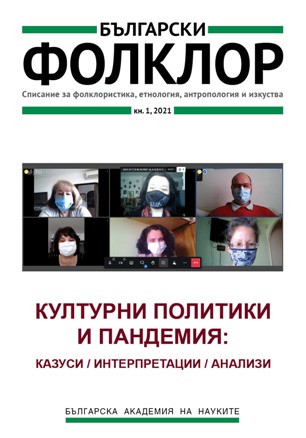
The article regards and analyses examples from the new musical creation, inspired by the COVID-19 pandemic. Those examples are published on the global network and contain some intrinsic features of folklore. The most important among these features is the reaction to events or occurrences from the current life of society. Object of analysis is also the activity of certain cultural institutions, such as community centres (chitalishta), schools, dancing or hobby clubs, retired people’s clubs and schools for folklore singing and folklore instruments, during the pandemic. The author also features some cases of postponing or cancellation of festival activities on local level and the performance of local non-professional artists in such shows.
More...

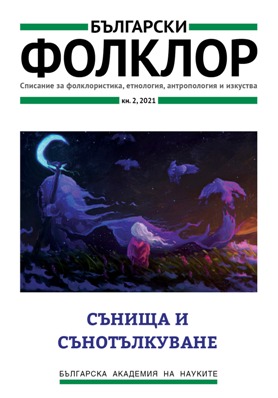
The article focuses on certain “points of contact” between the theories of dream interpretation developed by Sigmund Freud and Carl Gustav Jung and modern cognitive linguistics. The author underlines the relevance of linguistic transformations such as metaphor, metonymy, symbolization, paronymy, homonymy, paronomasia, and associative networks for Freud’s theory. Attention is also paid to the mechanisms of dream interpretation used by C. G. Jung: associative, metaphorical, and metonymic. The interpretation of symbols is a focal point in the study.
More...
The article presents the development of the theoretical interest in dreaming as an object of anthropological analysis. The focus of attention is on dreams per se, along with dream interpretation, narration of dreams, and perceptions related to dreams in different cultures. Beyond their psychoanalytic interpretation, dreams are examined as a specific type of ethnographic material and a means of communication within the community and between the researcher and the researched. Dreaming is a universal human characteristic, but at the same time, the importance attached to dreams in different societies varies significantly. Based on the ethnographic examples presented in the article, the author have sought to answer the question what factors make dreams in some cultures to be considered an important source of information and even a field of action, while in others they are perceived as imaginary fragments with no relation to everyday life.
More...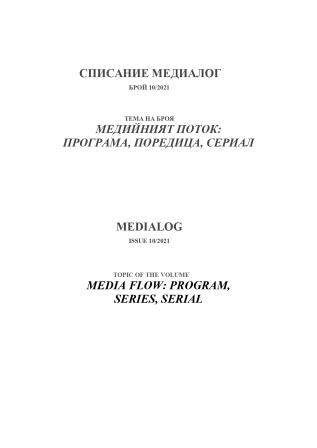
The text presents the main conclusions based on the study of the political messages in the Turkish series broadcasted on Bulgarian television and on Netflix. The main political messages in the series, showed on Bulgarian television, are the responsibility for decisions, connect with the life of a woman and a child. Among the important political topics are: migration, education abroad and returning home, conflicts between rich and poor.
More...
Review of Rosemary Statelova's latest book ‘The Story of a Musicologist’ (Sofia: Riva, 2020). The book, defined as ‘memoir-autobiography’, is not only a biography of Rosemary Statelova, her family and professional environment, but also a biographical history of the packed Bulgarian time in the last 70 years, structured as fragments of memories and texts.
More...